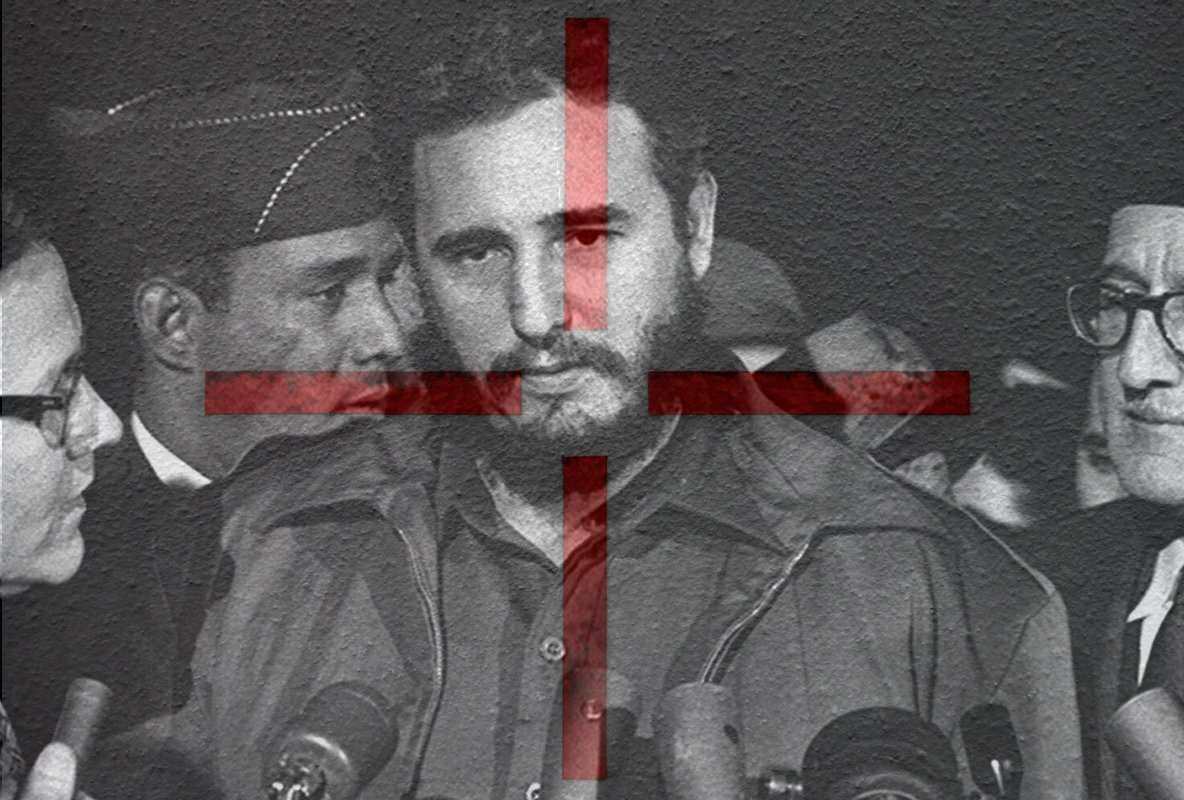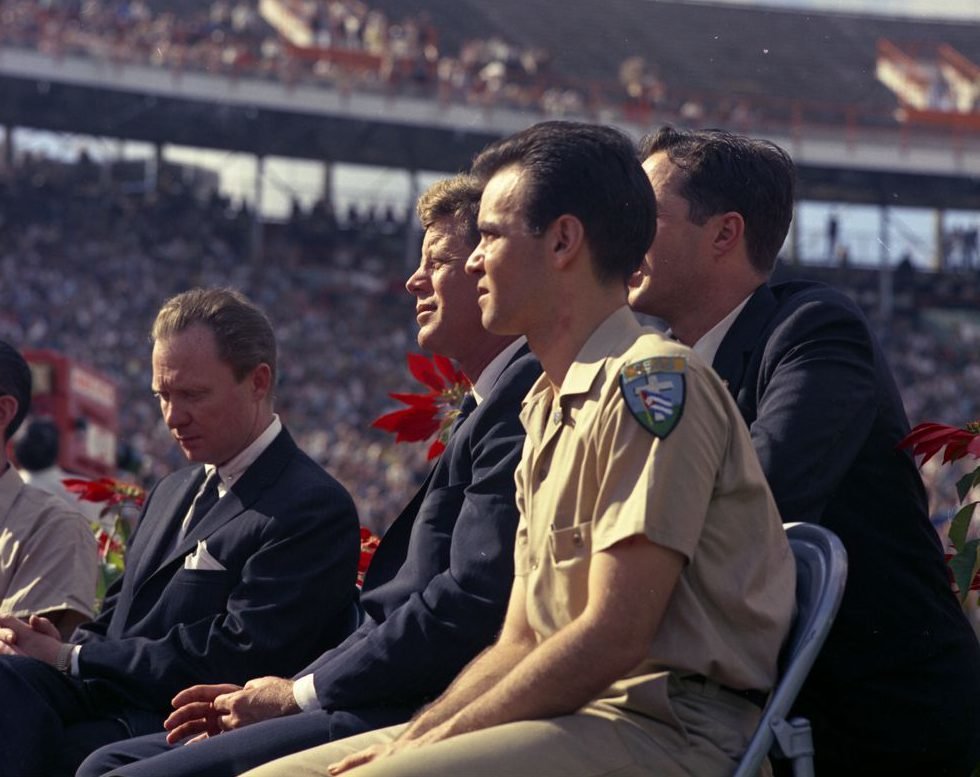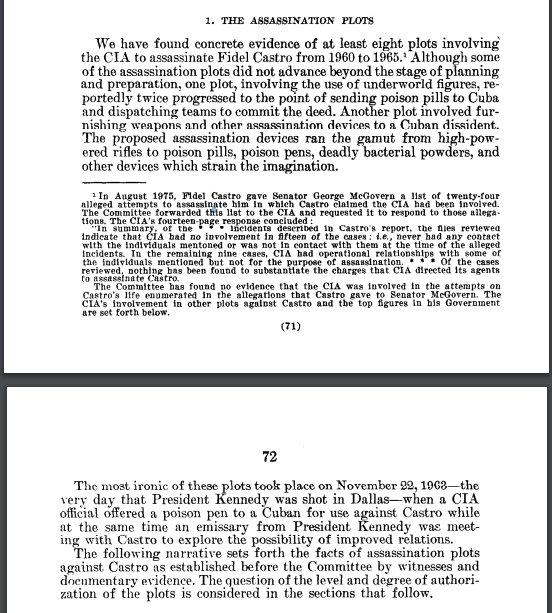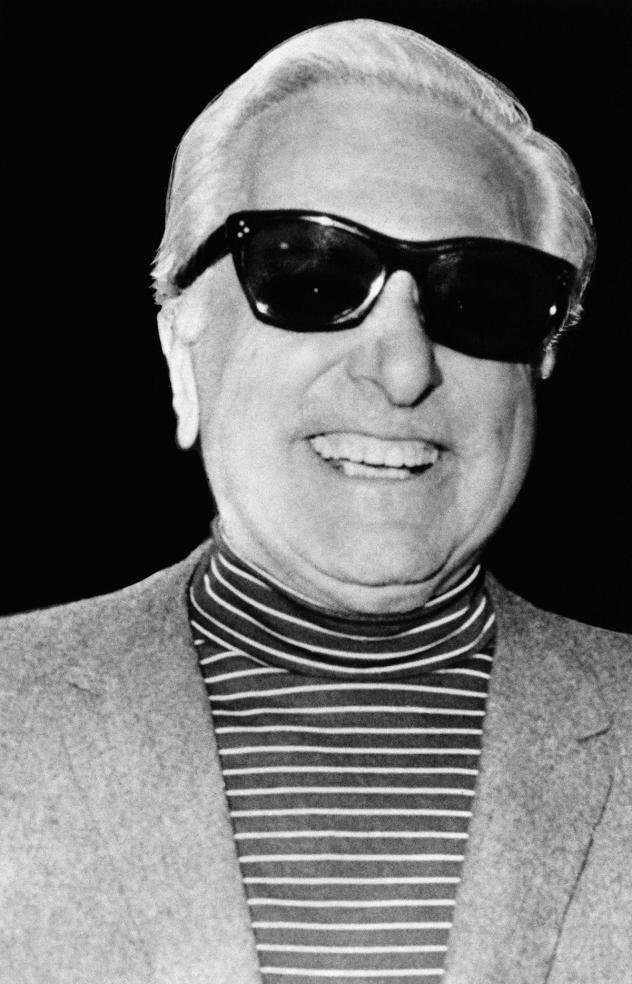Operation Mongoose: Exploding Seashells and Other Crazy Ways the CIA Considered Killing Fidel Castro

Fidel Castro in Washington, 1959. Photo courtesy of Wikimedia Commons. Composite by Coffee or Die Magazine.
At the height of the Cold War, President John F. Kennedy gave his blessing for the Joint Chiefs of Staff and the CIA to cook up a plot for removing the newest dictator in the communist bloc: Fidel Castro. With a broad range of ideas — rumors included LSD perfume — the government had some impressive tricks up its sleeve.
Brigade 2506 — a group of Cuban Americans intent on liberating their country from communism — invaded Cuba at the Bay of Pigs in 1961, but the operation was a massive failure, resulting in heavy losses, and Cuba held many of the survivors as POWs. The Cuban missile crisis brought the US to the brink of nuclear war the following year, leading Kennedy to consider new communication lines with the Soviets and the Cubans. These missteps within the Kennedy administration left the US government on unstable ground regarding international relations with several communist countries.
Kennedy frequently held back the Joint Chiefs of Staff — as the pressure mounted, they preferred to offer nuclear options before others. With the president reluctant to risk nuclear war, the CIA came up with a covert alternative: Operation Mongoose, run by a “Special Group (augmented),” or SGA, of policymakers and intelligence professionals. But nobody had any oversight of the CIA’s plans, leading to unchecked ideas, wild abuse of authority, and eventually the organization of the Senate Select Committee on Intelligence.

The Church committee hearings of 1975 — which would lead to the formation of the intelligence oversight committee — were held because of revelations from several publicly leaked documents alleging widespread government overreach. Discussing its findings from its investigation of the CIA, the committee’s report reads, “We have found concrete evidence of at least eight plots involving the CIA to assassinate Fidel Castro from 1960 to 1965.” The report continues for several pages, outlining each plot, including that of the “exotic seashell, rigged to explode.”
“Under the auspices of the National Security Council,” according to the Department of State’s Office of the Historian, “Operation Mongoose was designed to do what the Bay of Pigs invasion failed to do: remove the Communist Castro regime from power in Cuba.”
The CIA organized Operation Mongoose, also called “The Cuba Project,” in 1962. The SGA tasked with its execution envisioned ways to remove Castro from power through economic sanctions, sabotage, and propaganda. Some of the options involved Castro’s assassination, though the group scrapped several of those because of uncontrollable variables — like being unable to determine what features Castro would find most attractive in a seashell.

Documents released to the National Archives in 1997 as part of the Kennedy files showed the CIA had brainstormed multiple schemes with outlandish designs, including a toxic “skin diving suit.” The Inspector General’s report of 1977 references James Donovan, a New York lawyer and perhaps the most gifted negotiator in the world at the time, reading, “At about the time of the Donovan-Castro negotiations for the release of the Bay of Pigs prisoners […] a plan was devised to have Donovan present a contaminated skin diving suit to Castro as a gift.”
The SGA proposed that the fungus known to cause Madura foot be dusted inside the skin suit and the breathing apparatus be contaminated with the bacteria that cause tuberculosis. After the SGA decided not to proceed with the Madura foot plan, Desmond FitzGerald, chief of the special affairs staff, proposed the explosive seashell.
FitzGerald even bought a book on mollusks. The 1977 IG report states, “None of the shells that might conceivably be found in the Caribbean was both spectacular enough to be sure of attracting attention and large enough to hold the needed volume of explosive.” The CIA technical services department also dismissed the idea as “impractical.”

During a Senate hearing on Nov. 20, 1975, to investigate assassination plots involving foreign leaders, Kennedy’s secretary of state, Dean Rusk — who had participated in several planning meetings on Operation Mongoose — denied all knowledge of the Castro assassination plots.
The full details of Operation Mongoose are available in the US National Archives, though not all of them are available online.
Read Next:

Lauren Coontz is a former staff writer for Coffee or Die Magazine. Beaches are preferred, but Lauren calls the Rocky Mountains of Utah home. You can usually find her in an art museum, at an archaeology site, or checking out local nightlife like drag shows and cocktail bars (gin is key). A student of history, Lauren is an Army veteran who worked all over the world and loves to travel to see the old stuff the history books only give a sentence to. She likes medium roast coffee and sometimes, like a sinner, adds sweet cream to it.
BRCC and Bad Moon Print Press team up for an exclusive, limited-edition T-shirt design!
BRCC partners with Team Room Design for an exclusive T-shirt release!
Thirty Seconds Out has partnered with BRCC for an exclusive shirt design invoking the God of Winter.
Lucas O'Hara of Grizzly Forge has teamed up with BRCC for a badass, exclusive Shirt Club T-shirt design featuring his most popular knife and tiomahawk.
Coffee or Die sits down with one of the graphic designers behind Black Rifle Coffee's signature look and vibe.
Biden will award the Medal of Honor to a Vietnam War Army helicopter pilot who risked his life to save a reconnaissance team from almost certain death.
Ever wonder how much Jack Mandaville would f*ck sh*t up if he went back in time? The American Revolution didn't even see him coming.
A nearly 200-year-old West Point time capsule that at first appeared to yield little more than dust contains hidden treasure, the US Military Academy said.












